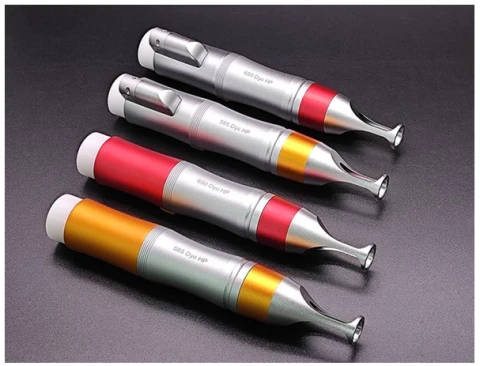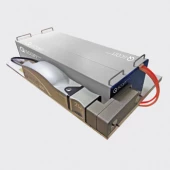Description
Introducing the DYE Handpiece, a cutting-edge innovation from CRYSTECH Inc., designed specifically for the medical cosmetology industry. This advanced handpiece is engineered to harness the power of dye lasers, which utilize organic dyes as their medium to generate laser radiation. Widely recognized for their efficacy, dye lasers are frequently employed in the treatment of various vascular conditions, including port-wine stains, hemangiomas, and telangiectasia. Additionally, they are instrumental in addressing skin concerns such as rosacea, spider nevi, acne, scars, stretch marks, dark circles around the eyes, and pseudofolliculitis, making them a versatile tool in skin rejuvenation procedures. The DYE Handpiece is meticulously crafted to serve as the operating handle for medical cosmetology procedures. It seamlessly connects to the laser output terminal of laser beauty instruments, facilitating the conversion of laser wavelengths from 532nm to either 650nm or 585nm. This transformation is pivotal in achieving the desired therapeutic outcomes. With a compact structure and user-friendly design, the DYE Handpiece ensures stable performance and ease of use. By simply replacing the handpiece, a single laser treatment apparatus can deliver a variety of laser beam emission modes, enhancing its versatility and functionality in medical settings. CRYSTECH's DYE Handpiece stands out for its robust construction and reliable performance. Its innovative design allows for the easy output of new wavelengths, making it a valuable addition to any medical cosmetology practice. Whether addressing vascular lesions, rejuvenating the skin, or treating inflammation, the DYE Handpiece is a testament to CRYSTECH's commitment to advancing laser technology in the field of medical cosmetology.
Dye Laser Handpiece for Medical Cosmetology Applications
Specifications
| Tuning Range: | 585 – 650 nm |
|---|---|
| Repetition Rate: | 1 – 1 Hz |
| Polarization: | Vertical, Horizontal |
| Model: | HP650-DYE-NHN |
| Output Wavelength: | 650nm |
| Efficiency: | 40% |
| Spot Size: | 2.5+/-0.5mm |
| Service Life: | ≥20K次 |
| Signal Cable: | No |
| Model: | HP585-DYE-NHN |
| Output Wavelength: | 585nm |
| Efficiency: | 60% |
| Spot Size: | 2.5+/-0.5mm |
| Service Life: | ≥20K次 |
| Signal Cable: | No |
| Model: | HP650-DYE-NHS |
| Output Wavelength: | 650nm |
| Efficiency: | 40% |
| Spot Size: | 2.5+/-0.5mm |
| Service Life: | ≥20K次 |
| Signal Cable: | Yes |
| Model: | HP585-DYE-NHS |
| Output Wavelength: | 585nm |
| Efficiency: | 60% |
| Spot Size: | 2.5+/-0.5mm |
| Service Life: | ≥20K次 |
| Signal Cable: | Yes |
| Input Wavelength: | 532nm |
| Input Energy: | 200mJ |
| Pulse Width: | 8ns~10ns |
| Energy Distribution: | Flattop light |
| Spot Diameter: | Φ12~13mm |
| Frequency: | 1Hz |
| Model: | HP650-DYE-PHN |
| Output Wavelength: | 650nm |
| Efficiency: | 20% |
| Spot Size: | 3.0+/-0.8mm |
| Service Life: | ≥20K次 |
| Signal Cable: | No |
| Model: | HP585-DYE-PHN |
| Output Wavelength: | 585nm |
| Efficiency: | 30% |
| Spot Size: | 4.5+/-0.8mm |
| Service Life: | ≥20K次 |
Features
- Compact in structure & convenient for replacement
- Easily achieve the output of new wavelengths
Applications
- Various scars
- Vascular lesions
- Laser skin rejuvenation
- Skin inflammation
- Rosacea
- Spider nevi, Port-wine stains
Frequently Asked Questions
What is the Dye Handpiece used for?
How does the Dye Handpiece work?
What are the key features of the Dye Handpiece?
What are the available models and their specifications for the nanosecond Dye Handpiece?
What precautions should be taken when using the Dye Handpiece?
What are the recommended usage conditions for the Dye Handpiece?
What are the differences between the nanosecond and picosecond models of the Dye Handpiece?
Similar Products
Your inquiry has been received.
Create an account by adding a password
Why create an account?
- Auto-complete inquiry forms
- View and manage all your past messages
- Save products to your favorites
- Close your account anytime — no hassle

